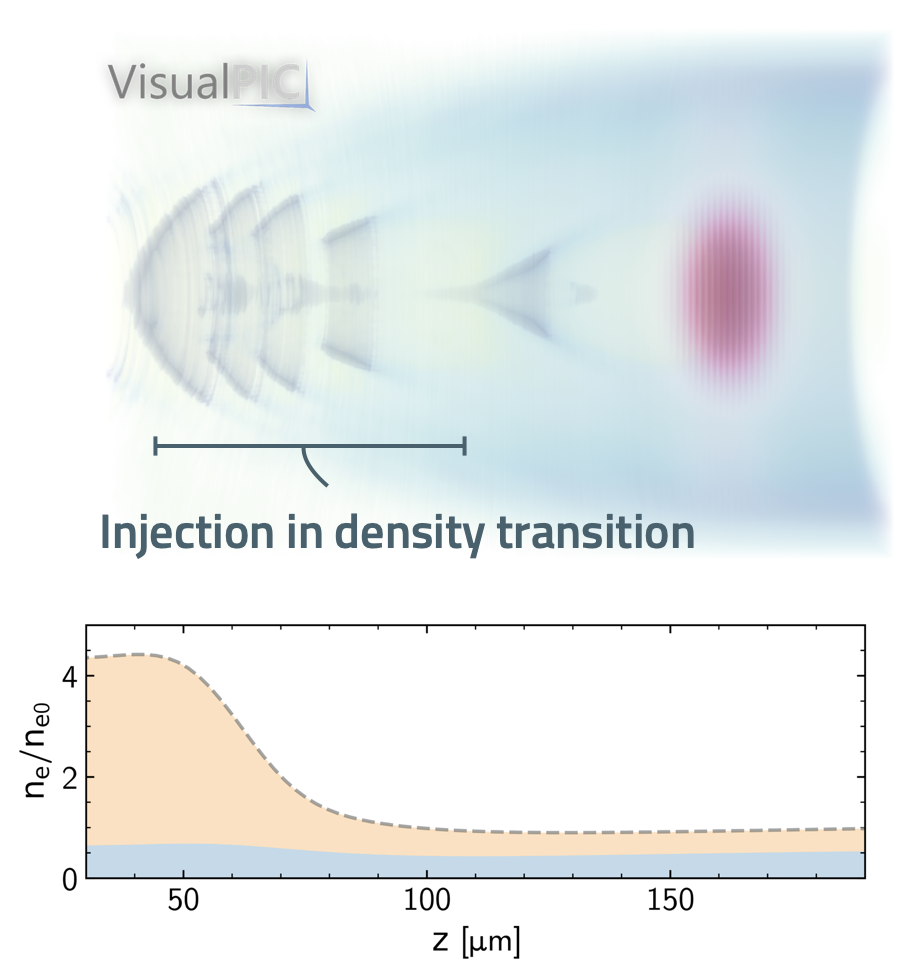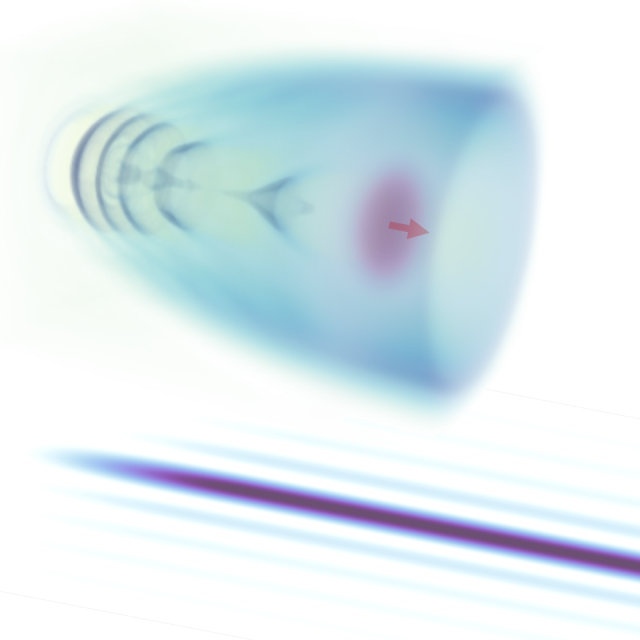Researchers in the laser-plasma accelerator group have recently published experimental results demonstrating a novel injection scheme that enables controlled electron injection into low-density plasma channels, crucial for high-energy applications of laser-plasma accelerators.
Laser-plasma acceleration is a cutting-edge technique that has gained significant attention due to its potential to produce extremely high-energy electron beams in much shorter distances than conventional accelerators. Traditional particle accelerators, such as those that power synchrotrons and free-electron lasers, require vast infrastructures extending over kilometres. In contrast, laser-plasma accelerators can achieve similar energies within mere centimetres, offering a more compact and potentially cost-effective solution. However, a key challenge within the field is the demonstration of controlled, repeatable electron injection into the accelerating structure, particularly at low plasma densities — the chosen operating regime for applications of the technology that require the highest electron energies.
The paper, titled "All-Optical GeV Electron Bunch Generation in a Laser-Plasma Accelerator via Truncated-Channel Injection”, introduces a new technique for generating high-energy electron beams within a laser-plasma accelerator. This innovative, but simple, method — known as truncated-channel injection — leverages the natural evolution of a plasma channel to create a density structure that promotes electron injection into a laser-plasma accelerator. The study was published in Physical Review Letters and was selected as an Editors’ suggestion.
In recent years, the laser-plasma accelerator group has pioneered the development of hydrodynamic optical-field-ionised (HOFI) plasma channels in which an elongated plasma structure guides a high-intensity laser pulse — overcoming its natural diffraction — and enables the laser-plasma accelerator length to be extended to the metre-scale, acting like a plasma-based optical fibre. The channel is generated by the expansion of a hot, thin plasma filament — ionised by a high-intensity extended focus produced by an optic called an “axicon” — leading to the creation of a radial plasma gradient with reduced density on-axis and increasing density in the walls of the structure.

As the guiding structure is generated by the cylindrical expansion of the plasma filament, the leading edge of the filament simultaneously expands longitudinally, creating a hemispherical shock at the front of the channel punctuated by a short, steep plasma density ramp at its entrance. When the drive laser pulse propagates through this ramp — the truncated-channel — the shape of the wakefield excited by it is modified, triggering injection of plasma electrons into the accelerating structure. In this study, it was shown that by overlapping the focus of the drive pulse with the density ramp at the channel entrance, high-quality bunches of electrons of energy 1.2 GeV and 4.5% relative energy spread could be consistently generated. Additionally, these bunches were shown to be “dark-current free”, avoiding extraneous electron injection during propagation that constitutes an unwanted background noise, reducing bunch quality. Another key result of the study was the demonstration of the sensitivity of the accelerator to the alignment of the drive laser pulse to the guiding channel. The quality of the accelerated electron bunches was observed to drop significantly when the misalignment of the two exceeded 10 μm, with the spectrum of the transmitted laser pulse simultaneously indicating reduced energy transfer to the plasma wakefield and a less efficient accelerator stage.
To explore the potential of this method further, start-to-end simulations were conducted, encompassing the entire process from channel formation to electron injection and acceleration. These agreed well with the experimental measurements and indicated that, by extending the channel length to 410 mm, it would be possible to continue to accelerate the injected electrons to energies of 3.65 GeV with “slice” energy-spreads consistent with those required for free-electron laser facilities. It was also demonstrated that the properties of the injected electron bunch, such as its charge, could be easily adjusted by modifying the longitudinal position of the channel-forming “axicon” focus.
The truncated-channel injection technique represents a promising step forward in the development of high-energy laser-plasma accelerators. By demonstrating the ability to produce GeV electron beams with high precision and minimal dark current, this method paves the way for more efficient and scalable particle acceleration technologies for applications in various fields, including medical imaging, where they could enhance the resolution and quality of images, and in particle physics research, where they could contribute to the study of fundamental particles and forces.
For further details, the full research paper is available here.

